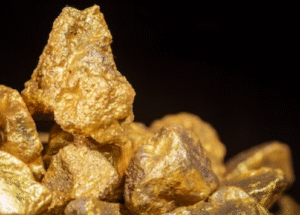$GLD $GOLD $BTC
#GoldDemand #CentralBanks #Poland #India #China #EconomicUncertainty #EmergingMarkets #AssetAllocation #Forex #GlobalMarkets #CommodityInvesting #MonetaryPolicy
November 2024 saw an impressive addition of 53 tons to global central bank gold reserves, emphasizing continued confidence in the precious metal amid rising global economic uncertainties. Leading the way was the National Bank of Poland, purchasing 21 tons to bring its total gold holdings to 448 tons. This move aligns with Poland’s stated goal of bolstering its gold reserves to 20% of total foreign exchange assets, a strategy designed to shield the country from external economic vulnerabilities. Poland’s accumulation highlights a broader trend among emerging markets leaning heavily on gold as a stable asset class. Other notable gold buyers in November included Uzbekistan, which added 9 tons, India with 8 tons, and China, re-entering the market after a six-month hiatus by purchasing 5 tons. For China, the resumption of gold purchases signals a potential shift in its reserve strategy amid growing geopolitical tensions and pressures on the yuan.
India’s purchases in November strengthened its position as the second-largest gold buyer of 2024, with total year-to-date acquisitions reaching an impressive 73 tons. This sustained accumulation reflects India’s strategic efforts to diversify its foreign exchange reserves and reduce reliance on the US dollar, all while navigating domestic inflationary pressures. Smaller players like the Czech Republic continued to make incremental acquisitions, bolstering their reserves through consistent monthly purchases. The strong demand from central banks in emerging markets signals a long-term confidence in gold not just as a hedge against inflation and currency risks but also as a tool to navigate the impacts of increasingly fragmented global trade dynamics.
Not all central banks followed this bullish trajectory in November. Singapore reduced its reserves by 5 tons, marking a pivot that may reflect a preference for liquidity or shifts in forex positioning. Meanwhile, Finland announced plans for a 10% reduction in its gold reserves as part of a broader restructuring of its monetary policy priorities. By reallocating gold to foreign exchange holdings, these adjustments could reflect some central banks’ attempts to capitalize on the gold market’s price recovery earlier in the year, while simultaneously hedging against future currency volatility. These divergent strategies among gold-holding institutions underscore the complexity of managing reserves during periods of economic uncertainty.
The post-US election environment appeared to create an opportunistic moment for gold purchasers in November. A dip in gold prices—likely influenced by short-term market volatility—provided an attractive entry point for central banks. This renewed buying activity contributed to maintaining gold’s status as a critical reserve asset even amid broader market fluctuations. Despite some sellers taking advantage of strong price rebounds earlier in the year, the cumulative demand for gold reflects resilient confidence in its role as a safe-haven asset. Central banks’ actions signal that gold remains a cornerstone of their reserve strategies, influenced by geopolitical uncertainty, currency pressures, and global economic trends. For financial markets, this buying trend reinforces the narrative of gold’s enduring value as a hedge and an anchor in a volatile macroeconomic environment.







Comments are closed.